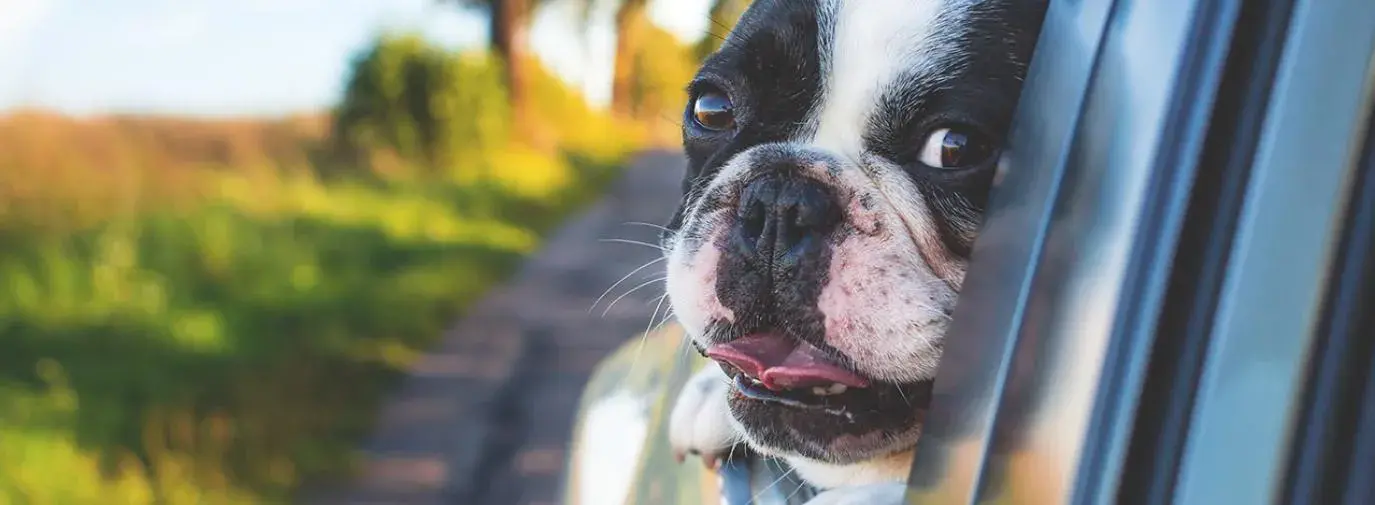
Many pet owners will attest that having a cat or dog to cuddle can brighten your day. What they may not know is that it may also improve your health. A 2010 study from the University of Missouri School of Veterinary Medicine found that positive interactions with animals can raise levels of the hormone oxytocin, which helps encourage healing and new cell growth.
Since pets can be exposed to harmful toxins in their food, litter, and flea medicine, bringing green-living values to pet ownership may help extend the life of your beloved animal companion. Meanwhile, your pet-related purchases will also support the green economy.
If you don't have a pet yet, adopting from a shelter is the most sustainable option. If you do have one, make sure to spay or neuter it-- it helps to reduce the number of animals that end up homeless or living in shelters.
Here are Green America’s top five high-impact ways to green your dog or cat:
1. Put Your Pet on a Low-Carbon Diet
Just like a human, omnivorous cats and dogs eat food with a significant greenhouse gas footprint: namely, food with beef or lamb in it. The Environmental Working Group’s “Meat Eater’s Guide” notes that beef produces 13 times more greenhouse gases over its life cycle than vegetable proteins, and the carbon footprint of lamb is 50 percent higher.
Poultry produces four to five times as many greenhouse gases as vegetable proteins, so choose poultry-based foods for your omnivorous pet that contain no animal by-products or artificial preservatives, like the chicken and vegetable options in the Life’s Abundance and Natural Life lines of cat and dog foods.
Even better: Some companies make organic vegetarian and chicken-based pet food, which helps ensure that no synthetic pesticides have been sprayed on the food. The Honest Kitchen makes organic pet foods, and Onesta Organics sells organic raw food treats for cats and dogs. Bixbi’s Organic Superfood line of food for active and older dogs is made with turkey and free-radical-fighting “superfoods” to promote digestive, joint, or immune-system health.
Many veterinarians say that cats should not be fed a vegetarian diet; they need more protein and other nutrients found in meat than humans. However, dogs can go vegetarian, though it’s best to make the switch under the supervision of a vet to ensure proper nutrition.
V-Dog LLC offers vegan dog food. In addition to its omnivorous foods, Natural Life has a Vegetarian Formula for adult dogs. If you have the time and inclination, you can also make your own organic and vegetarian dog food. Find recipes at organicauthority.com.
2. Use re-purposed doggie bags
After diet, pet waste is where your dog or cat has the most impact on the planet. No truly responsible pet owner takes a dog out for a walk without a plastic bag for pet waste tucked in a pocket. There are a lot of pet-waste bags out there that trumpet the fact that they’re “biodegradable” or “compostable” on their packaging, but since most bags of poo are destined for the landfill, the biodegradable label doesn’t mean all that much. When buried in a landfill and cut off from oxygen, even a biodegradable or compostable bag won’t degrade aerobically and turn into compost; instead, it’ll degrade very slowly and odoriferously, with the help of anaerobic bacteria.
A better option is to repurpose the plastic bags that were used to package your clothing, food, or junk mail. Perhaps the best option, however, is to forego the bags altogether and actually compost your pet’s waste.
3. Even better, compost it
You don’t want to add dog or cat waste to the compost pile destined for your garden, because it can contain pathogens that aren’t safe on your food. However, you can set up a separate compost system for it that will reduce the volume of your pet’s waste by at least 50 percent, kill off most of the pathogens, and add nutrients to the soil, according to the US Department of Agriculture.
Canada’s Office of Urban Agriculture has step-by-step instructions for a separate pet waste composting system. It involves drilling holes in a small, lidded garbage can, burying it with the lid sticking out, and dropping pet waste inside, as well as a packet of nontoxic enzymatic septic starter (available at your local hardware store) and a liter of water every month. The site says you should only need to empty the can every two to three years.
You can safely compost an herbivorous pet’s waste in your garden compost (i.e. rabbit, hamster, guinea pig, etc.).
4. Choose better litter
Conventional cat litter—clumping and non-clumping—is made from bentonite clay, which is extracted from the Earth through environmentally damaging strip mining. In addition, clay litter contains crystalline silica, a known carcinogen according to the World Health Organization.
Clay litter is also near the end of its decomposition cycle, so if you try to compost waste with clay litter mixed in, the litter will just sit there.
The solution: natural, non-clay litters. To avoid silica dust, try World’s Best Cat Litter, which is made from 100 percent US-grown corn, or Swheat Scoop, which is made from wheat. Both corn and wheat are naturally clumping and odor-controlling.
If you’d rather not buy cat litter made from a food crop, try Feline Pine, which is made from reclaimed pine shavings and guar bean gum, or Yesterday’s News, made from recycled newspaper.
While it’s best to buy litter from a smaller green company, Arm & Hammer’s Essentials line of clumping litters may be easier to find in a pinch: the company claims it’s made from corn fibers, baking soda, and plant extracts.
5. Prevent fleas naturally
Fleas are itchy nuisances, but flea collars and conventional flea shampoos usually contain pyrethrins and organophosphates, which are suspected neurotoxicants and carcinogens.
To keep fleas at bay, tend your pet with a flea comb weekly. And use nontoxic shampoos like the organic, ayurvedic products from Dr. Desai Soap. Dr. Desai also sells a nontoxic neem oil flea and tick repellent for pets.
If you’re experiencing a full-out flea infestation in your home, head to your local home improvement store for a bag of food-grade diatomaceous earth (DE). It’s made of the skeletons of deceased diatoms, a type of algae. Don’t be troubled that food-grade DE contains amorphous silica—it’s crystalline silica (found in pool-grade DE) that has been linked to lung toxicity and cancer.
Annie Bond, author of Home Enlightenment (Rodale Books 2008), recommends doing the following:
- Though food-grade DE is safe for plants, pets, and humans, cover your mouth and nose and your pet’s to prevent uncomfortable inhalation.
- Then, rub it all over your pet’s fur, starting with the spine and working your way down. The fleas should die within 24-72 hours, though you may need to repeat every three days until they’re gone.
- Sprinkle DE across floors and carpets and surfaces. Leave it sitting for four days (best if you can leave the home), and then vacuum. Repeat if needed.
- Spread DE on lawns and outdoor surfaces to kill fleas outside, too.
6. Sustainable pets are always in style
There are numerous green products available for your everyday pet needs. Find collars and leashes made from hemp or dog and cat toys from organic fibers, organic pet beds, and even reclaimed cotton dog sweaters, from certified green businesses at GreenPages.org.







